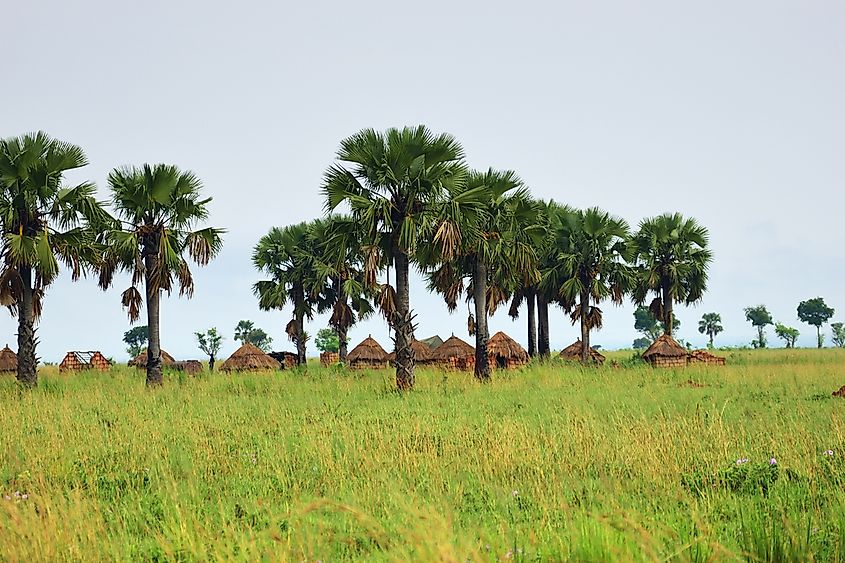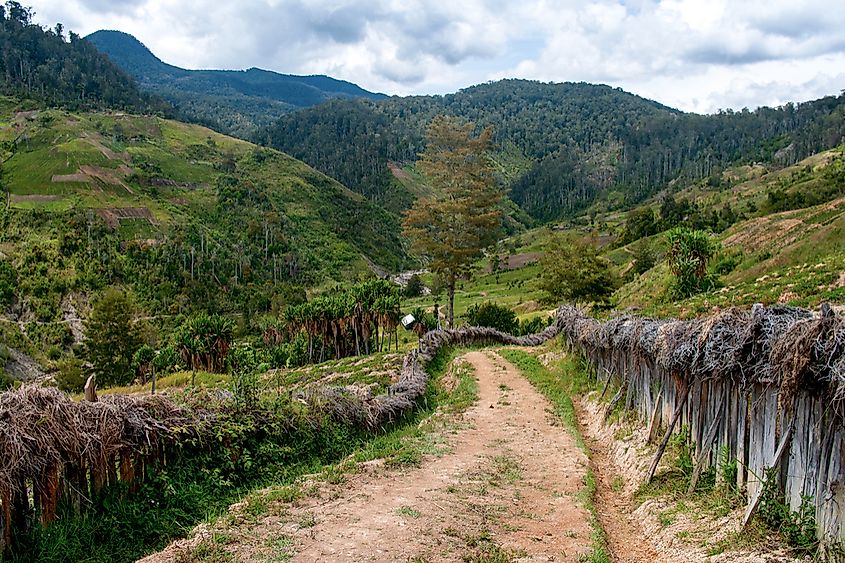Countries With the Highest Percentage of Rural Residents

People living in urban areas today accounts for around 54 percent of the total world population up from 34 percent in 1960. It is projected that in coming years, an overwhelming majority of people globally will be residing in urban areas as urbanization further penetrates less developed nations. Global urban population growth has seen steady increases in recent decades outside of a select handful of exceptions, such as Liechtenstein and Trinidad and Tobago. The actual global urban population is projected to grow by approximately 1.84 percent per year between 2015 and 2020, 1.63% between 2020 and 2025, and 1.44 percent annually between 2025 and 2030.
Aside from Liechtenstein, most countries garnering top slots on this list of the countries with the smallest urban populations generate a large portion of their GDP from agriculture, which is in line with having high relative rural populations and low levels of urbanization. Except for a few select cases, the world population is still continuing to move from rural to urban areas en masse, even in those countries making our list. More rural areas are also being engulfed as a result of the urban developmental sprawl, hence increasing the global urban population further. To help readers understand the outliers as of yet inconsistent with the globe, we provide a list and subsequent analysis of the urban population dynamics of countries with the lowest urban populations relative to total populations in the world.
5. Uganda - 16.1%

The percentage population of Uganda's urban population is approximately 16.1%. Over the last half century, this indicator attained a maximum figure of 5,801,051 in 2013 and a minimum figure of 299,835 in 1960. With fertile soils and regular rainfall, agriculture contributes almost a quarter of Ugandan Gross Domestic Product.
4. Liechtenstein - 14.3%

In Liechtenstein, the total of the population who lives in urban areas is around 14.3%. It was lowest in 2014 at 14.31 percent and highest at 20.44 percent in 1960. The dynamics of Liechtenstein urban population is similar to that of Trinidad and Tobago. It is seen to decline while others are rising. With one of the highest GDPs per capita in the world, quality of life is high in Liechtenstein, with most of its revenues coming from foreign trade and banking, tourism, and manufacturing. Many here live in rural areas and commute to work within the country's cities and towns.
3. Papua New Guinea - 13%

The size of the urban population in Papua New Guinea was last measured at 13%. Over the past half a century, this population indicator attained a highest value of 950,080 in 2013 and the lowest value of 73,269 in 1960. An extremely natural resource-rich nation, fertile soils contribute to its generating 30% of its GDP from agriculture, with mineral and petrochemical extraction and processing providing the bulk of its remaining revenues.
2. Burundi - 12.1%

The urban population of Burundi was last measured at 12.1% by the CIA World Factbook. Over the past half a century, this indicator clocked a maximum number of 1,165,846 in 2013 and a minimum number of 57,881 in 1960. Despite making our list, the urban population is growing rapidly in Burundi. This growth is fueled mostly by the population growth in Burundi at large, where the populace's size more than tripled between 1950 and 2010. In line with a low relative population, the economy here is predominantly based on agriculture.
1. Trinidad and Tobago - 8.4%

The total urban population of the country of Trinidad and Tobago only makes up 8.4% of their population. Over the past half century, urban population growth here has been bizarre and irregular. The urban population in this country reached a maximum of 147,203 in 1960 and a minimum number of 104,277 in 1990. Even in the last decade, the population has seen a decline contrary to an overwhelming majority of other countries around the world. There has been a sharp decline in urban population in this country since 2000. In the year 2000, the urban population was at 136,650 and in 2013, it was at 116,224. Only about 1 in 12 residents here live in urban areas, despite a modern economy that is among world leaders in petrochemicals, especially natural gas, and telecommunications.
The World’s Smallest Urban Populations
| Rank | Nation | Urban Population (%) |
|---|---|---|
| 1 | Trinidad and Tobago | 8.4 |
| 2 | Burundi | 12.1 |
| 3 | Papua New Guinea | 13.0 |
| 4 | Liechtenstein | 14.3 |
| 5 | Uganda | 16.1 |
| 6 | Malawi | 16.3 |
| 7 | Sri Lanka | 18.4 |
| 8 | Saint Lucia | 18.5 |
| 9 | Nepal | 18.6 |
| 10 | Niger | 18.7 |
| 11 | South Sudan | 18.8 |
| 12 | Samoa | 19.1 |
| 13 | Ethiopia | 19.5 |
| 14 | Cambodia | 20.7 |
| 15 | Swaziland | 21.3 |
| 16 | Solomon Islands | 22.3 |
| 17 | Federated States of Micronesia | 22.4 |
| 18 | Chad | 22.5 |
| 19 | Eritrea | 22.6 |
| 20 | Tonga | 23.7 |
| 21 | Antigua and Barbuda | 23.8 |
| 22 | Kenya | 25.6 |
| 23 | Vanuatu | 26.1 |
| 24 | Afghanistan | 26.7 |
| 25 | Tajikistan | 26.8 |











